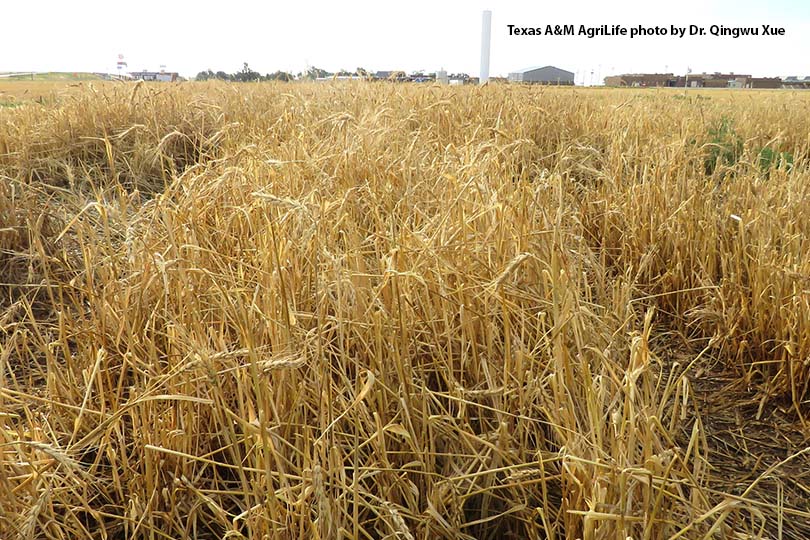Farmers and Texas A&M AgriLife Extension Service experts across the High Plains are evaluating crops for damage after hail storms hit the region earlier this month and in late June.
The storms affected many crops, including mature wheat ready for harvest. Cotton, corn, sorghum, sunflowers and vegetables were also damaged. Hail stones ranged from pea- to golf-ball-size, according to AgriLife Extension reports.
Dr. Jourdan Bell, AgriLife Extension agronomist in Amarillo, says farmers should evaluate damage several days after the storm.
Bell said early indicators reveal the biggest yield losses appear to be in cotton.
“We have plots on the Bushland research station where we lost all of the leaves and the terminal is damaged,” Bell told AgriLife Today. “Because we do not have sufficient growing season left for a full recovery, these plots are a full loss in our region.”
Bell said forage and grain sorghum in earlier vegetative growth stages will most likely recover with minimal yield loss. Yield losses are reduced in grain sorghum when the growing point is below the soil surface.
Corn is more susceptible to hail damage when the growing point moves above the soil surface, according to Bell.
She noted research has shown that a population as low as 20,000 plants per acre for cotton can partially compensate for the reduced stand.
Bell cautioned farmers in the Panhandle to evaluate the optimum planting dates for crops such as sunflowers and grain sorghum before they replant.
Silage, Bell said, might be an option for the damaged corn crop for farmers located close to dairies and feed yards, but that will depend on contract availability.
For growers considering replanting with sorghum, they will need an early maturing hybrid to finish before the freeze in the fall, Bell noted.
Farmers planting grain sorghum also need to be aware the sugarcane aphid will still be a concern in late-planted sorghum, according to Dr. Ed Bynum, AgriLife Extension entomologist in Amarillo.
Bell noted farmers need to consider the herbicides they used in cotton when considering their cropping rotation.
She also said corn that reached tassel will likely be a complete percent loss if hit by hail, because there is no longer a pollen source for fertilization. But there was “a lot of late-planted corn that was in vegetative stages of development that will survive with varying degrees of yield loss,” Bell said.
Corn and sorghum in vegetative stages will not be a complete loss. She said yield losses in corn will increase with each advanced leaf stage and leaf loss until tasseling.
Bell said the amount of damage will also depend on the size of the hail.
“One of the challenges for our corn farmers who have experienced hail damage, ultimately, will be that at the current lower commodity prices, any reduction in yield potential is significantly affecting their very narrow profit margin,” Bell said.

